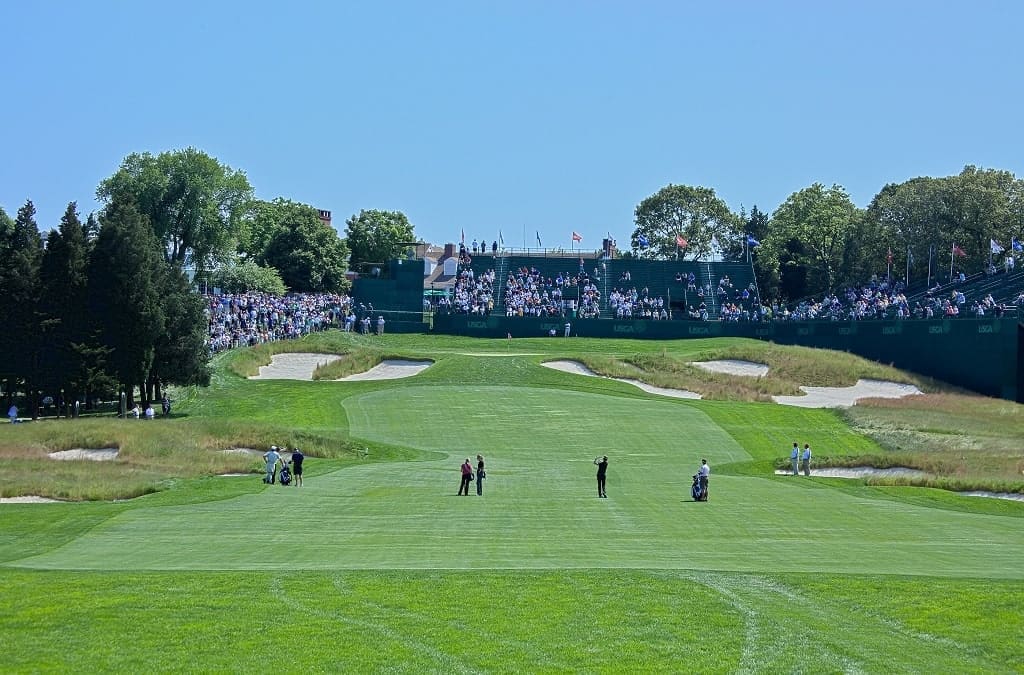If you have a commercial property in Minneapolis or St. Paul that needs some landscaping improvements or lawn maintenance services, you may be thinking about what type of cool weather grass to use on your lawn areas, such as tall fescue or perennial ryegrass.
While both are excellent choices and fairly similar, there are some important differences between the two types of cool season grasses that are important to know about. So the question is, ryegrass vs fescue – which one is better? Let’s take a look at the differences and figure it out.
What Is Perennial Ryegrass?
A thin but beautiful grass, Perennial Ryegrass is very bright and is quite easy to spot, even when blended with other grasses. It may be thought of as temporary grass, but in fact, ryegrass comes back reliably and beautifully year after year.
A quick germinating grass, ryegrass is often used as a nurse plant for other slower-growing varieties. It also happens to be very durable and even helps to suppress the growth of other undesirable plants such as crabgrass. Unfortunately, it doesn’t spread well, leaving it more susceptible to bare patches than other grasses.
What Is Tall Fescue?
The most popular of all cool season grasses, tall fescue is very adaptable and easy to work with. And what does tall fescue grass look like? Tall fescue has medium-wide blades with dark shiny green leaves that grow quite uniform.
If you’re in the Northern half of the U.S. and deal with cool/humid temperatures, there is a lot to love about tall fescue. Not only does tall fescue look great, but it’s heat, drought, and shade resistant. This makes it very adaptable and durable. It also resists wear and tear, and it has a deep and extensive root system.
Perennial Ryegrass Is a Perfect Choice for Heavy Traffic Areas
If you have some heavy traffic areas where you need extremely durable grass, perennial ryegrass is likely the best option for you. It’s fast-growing and hard-wearing, making it perfect for areas with a lot of people. In fact, perennial ryegrass is often used on golf courses, school fields, sports fields, and lawns.
However, if you’re comparing perennial ryegrass vs. fescue, you really can’t go wrong with either in a high-traffic situation as fescue is also quite durable. Earth Development knows fescue is also used for school playgrounds and sports fields and is also often used as a pasture grass for horses and cattle.

Tall Fescue Is More Drought-Resistant
However, if you’re in an area that is susceptible to drought, you’re going to want to choose tall fescue over perennial ryegrass. Why? Tall fescue is extraordinarily drought resistant because of its extensive and deep root system. This means tall fescue will be able to access deep groundwater in the event that it doesn’t get much water at ground level. In fact, tall fescue can tolerate up to 100 days of less than ample watering, making it the ideal choice if you’re worried about water availability.
Perennial Ryegrass Is Great for the Midwest States and Tall Fescue Is Ideal for Transition Zones
While perennial ryegrass is best adapted to the coastal regions of the U.S., it still does quite well in Midwest states. However, in harsh winter conditions, it does become dormant and may even die. In transition zones, which are the areas of the central U.S. that lie between cool and warm season grasses, tall fescue grass thrives.
Pests and Disease of Perennial Ryegrass vs Tall Fescue
While both of these grasses are quite hardy, there are a few diseases that they may be susceptible to. Perennial ryegrass may be affected by some diseases such as brown blight, powdery mildew, leaf spots, or even snow mold. It can also be damaged by pests including the stem weevil.
In the case of tall fescue, it’s very susceptible to a disease called fusarium blight, which can cause a tremendous amount of damage to young lawns that have been planted in Spring. With established tall fescue lawns, they can be susceptible to leaf spots and brown patches, as well as pests like white grubs, armyworms, and cutworms.
Perennial Ryegrass and Tall Fescue Have a Variety of Species
It’s interesting to know that both perennial ryegrass and tall fescue have a variety of different species. In fact, perennial ryegrass has over 200 different varieties including several blends. Earth Development knows that tall fescue features more than 60 varieties, including Hound Dog, Rebel, Falcon, Olympic, Goar, Adventure, and Fawn to name a few.
Conclusion
If you’re in the Midwest, you definitely want to utilize the above information when planning your landscaping. Both perennial ryegrass and tall fescue are often used, but as you can see, they are best utilized in slightly different circumstances.
If you’re still unsure, it’s best to speak with an expert in grasses that can help you make the right decisions about which grasses to use in your landscape. In the Midwest, Earth Development landscaping services will provide you with in-depth knowledge and experience to choose the best grass for your lawns and landscapes. Contact us!
